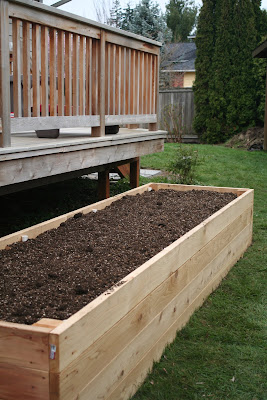This afternoon I turned my attention to our fruit bed. I had already laid down the soaker hose so I pulled the strawberry starts from my fridge. I was having a hard time visualizing 50 strawberry plants one foot apart, so I snagged 50 toothpicks from my baking supplies and spread them around to help me with my spacing.
I left the hairy mess of starts out on a plate between damp paper towels since it was short-sleeve weather and I didn't want the roots to dry out.
Raintree Nursery (where I got them) says that strawberries are very flexible: they can be planted in mounds, beds, rows, containers, etc. -- but their root tips should be straight. Now the rest of what I show you I might have gotten wrong. I am NOT an expert. I did what seemed right for me -- it may or may not be right, it may or may not be right for you.
Disclaimer complete, I will now share my process: when I planted my starts I would flip the berries upside down and open up their root skirts.
Then I would place them in a prepared hole. I prepared the holes by shoveling out a spadeful of dirt, then crumbling most of the dirt back in careful to be gentle with the worms. Then I would shape the crumbled dirt in the hole into a mound that was essentially soil level high before setting the strawberry start on top so its skirt would fan out.
Then I would cover the roots with the remaining soil. If you look around you can find a lot of pictures like this one from
Ask The Berry Man that give a visual of the level at which the crown should be planted. I hope I got it right.
For the most part though I didn't worry much about planting my strawberries because I knew that the area would be covered with compost later this afternoon -- and that made me feel like I had backup. So by day's end, with the help of a neighborhood teenager who hauled all the compost, my fruit bed looked like this.
I can't wait to see what it looks like this summer! But for now, with an achy back and a mild fever, it is time to get myself to bed so I can recuperate for tomorrow.




















































